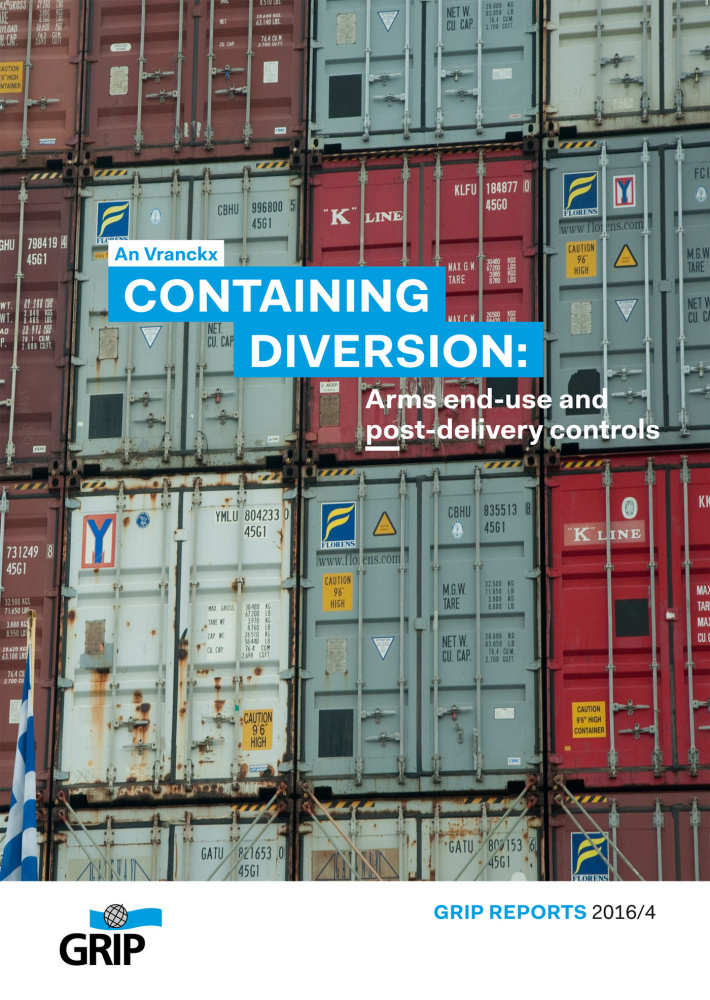Containing diversion
Arms end-use and post-delivery controls
Arms transfer control authorities are in an unenviable position. Great responsibility is implied in each decision they make regarding the authorisation of the export of certain types and volumes of military goods or technology. Lire la suite
Arms transfer control authorities are in an unenviable position.
Great responsibility is implied in each decision they make regarding the authorisation of the export of certain types and volumes of military goods or technology. A decision to deny the requested transfer licence prevents a company from supplying a customer abroad and is bad for business, while a decision to authorise the transfer might result in the goods being used for ill.
In an ideal world, arms export control authorities would have at their disposal accurate end-use documentation allowing them to judge whether the intended use is in line with the exporting country's national laws, as well as regional and international conventional arms control arrangements.
In the real world, however, they have all reasons to be aware that the arms may end up being used elsewhere, by others and for other ends.
Awareness of the risk that arms transfers may be diverted to other users and uses has become notably more articulated in recent years. A number of high level international initiatives are in the works to mitigate that risk. These seek to improve the reliability of end-use(r) documentation and ensure that relevant information is shared among concerned parties.
Before taking stock of these initiatives and outlining their context, this report first presents the state of play of arms export control practices in Europe and the United States. In this process, the report identifies where verification of end-use documentation, post-delivery control and actual end-use monitoring can be improved. It probes the progress made and reflects on what can realistically be achieved on the road ahead.
Spécifications
- Éditeur
- GRIP
- Auteur
- An Vranckx,
- Collection
- Rapports du GRIP
- ISSN
- 24666734
- Langue
- anglais
- Catégorie (éditeur)
- Sciences économiques et sociales > Sciences politiques et sociales
- Catégorie (éditeur)
- DUC > Sciences politiques
- BISAC Subject Heading
- POL000000 POLITICAL SCIENCE > POL001000 POLITICAL SCIENCE / International Relations / Arms Control
- Code publique Onix
- 01 Grand public
- CLIL (Version 2013-2019 )
- 3283 SCIENCES POLITIQUES
- Date de première publication du titre
- 08 juin 2016
- Type d'ouvrage
- Monographie
Livre broché
- Details de produit
- 1
- Date de publication
- 08 juin 2016
- ISBN-13
- 9782872910571
- Ampleur
- Nombre de pages de contenu principal : 40
- Code interne
- 93451
- Format
- 17 x 24 cm
- Poids
- 85 grammes
- Prix
- 6,00 €
- ONIX XML
- Version 2.1, Version 3
- Details de produit
- 1
- Date de publication
- 08 juin 2016
- ISBN-13
- 9782872910595
- Ampleur
- Nombre de pages de contenu principal : 40
- Code interne
- PDF93451
ePub
- Details de produit
- 1
- Date de publication
- 08 juin 2016
- ISBN-13
- 9782872910588
- Ampleur
- Nombre de pages de contenu principal : 40
- Code interne
- 93451Epub
- ONIX XML
- Version 2.1, Version 3
Google Livres Aperçu
Publier un commentaire sur cet ouvrage
Sommaire
INTRODUCTION
THE FIRST LINES OF DEFENCE:EMBARGOES AND CRITERIA-BASED ASSESSMENT OF END-USE
DOCUMENTATION
DEALING WITH DIVERSION RISKS IN THE EU
THE US DEPARTMENT OF STATE ''BLUE LANTERN''
SWISS POST-SHIPMENT VERIFICATION
POST-LICENSING VERIFICATION BY EU COUNTRIES' ARMS EXPORT CONTROL AUTHORITIES
SHARING INFORMATION GLOBALLY
TENTATIVE CONCLUSIONS

